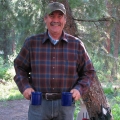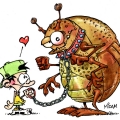VE3SUN
About
- Username
- VE3SUN
- Joined
- Visits
- 240
- Last Active
- Roles
- Member
- Points
- 36
-
http://ve3sun.com/KiwiSDR/index.php
-
Search DX Cluster for recent spots in the right click context menu
Thanks John. I don't think there is any rush unless someone is anxious out there. I have been thinking of other features to add to that menu.Personally, I would like to have adding a tag note as a menu item instead of just the shift-click. I tend to forget keyboard shortcuts
I have been thinking of other features to add to that menu.Personally, I would like to have adding a tag note as a menu item instead of just the shift-click. I tend to forget keyboard shortcuts Maybe we should add a menu item that shows a list of keyboard shortcuts or even more of a reference card to the UI.Another thought is to save the waterfall image to a file, but I would like to see the ability to annotate it and have an accurate time line stamped on it as well. I expect those are already on the long request list...
Maybe we should add a menu item that shows a list of keyboard shortcuts or even more of a reference card to the UI.Another thought is to save the waterfall image to a file, but I would like to see the ability to annotate it and have an accurate time line stamped on it as well. I expect those are already on the long request list... -
What do you "chase"
Mostly I listen to the IBP beacons.But since I have been playing around with the Kiwis I have stumbled across some SWL adventures that take me back to my earliest days. Hearing CHU again reminded me of my childhood days with a radio that glowed in the dark and had a green magic eye tube for signal strength - Hey maybe I should make one for the KiwiSDR! Nice to see that there are still some shortwave broadcasters out there.Hearing the NDBs reminds me of standing on the bow in the middle of the night as we sailed out of sight of land and pointing the hand held receiver around in hopes of getting a bearing on something to ensure we were heading in the right direction.I think it is a time machine.It has also been fun hearing the DXpeditions, even though I don't have a transmitter on the air right now. Fun listening to those pileups from different locations and comparing propagation with the predictions. -
Search DX Cluster for recent spots in the right click context menu
https://github.com/jks-prv/Beagle_SDR_GPS/pull/120I have added a new item on the right click menu to openwebrx.js.DX Cluster search will take the frequency and search the last 1,000 spots for any reported activity on that frequency.If you think it might be of use to DXers, please feel free to merge it.Peter -
Logging and note taking
-
Repository of dx.json
I have, as an experiment, imported the dx,min.json and the waszkd.json files into the list of transmitters for propagation forecasts to the online receivers.If google was able to determine a location from the comment field, you can click on the link to the list of KiwiSDRs that currently should have propagation to that transmitter. The propagation maps will be shown. You can then click on the SDR button to go to that receiver tuned to the frequency and mode.Work in progress...Edit: m0taz and dist.dx.json now added as well... -
Repository of dx.json
I have, as an experiment, imported the dx,min.json and the waszkd.json files into the list of transmitters for propagation forecasts to the online receivers.If google was able to determine a location from the comment field, you can click on the link to the list of KiwiSDRs that currently should have propagation to that transmitter. The propagation maps will be shown. You can then click on the SDR button to go to that receiver tuned to the frequency and mode.Work in progress...Edit: m0taz and dist.dx.json now added as well... -
Caribbean Emergency Weather Net (CEWN)
Amateur radio operators are providing emergency communications in the wake of Hurricane Maria.7.188 and 3.815 MHz LSBThis is mainly health and welfare information - family members and friends asking about each other.At one point, I could hear both the Puerto Rican station and the US station who were having great difficulty hearing each other. Surprisingly there was no other ham on the frequency to help.I was listening via a Florida Kiwi, half way between the two. It strikes me that the availability of these receivers to ARES operators to assist in relaying messages would be important.If that did become the case, there would be a need for a priority operator to be able to kick casual listeners off in order to use a receiver. I am not sure if John has considered these kinds of protocols, but it may be time to start thinking about how that might work.The new propagation display on the VE3SUN list makes it easy to find stations with good propagation on the needed frequency. http://ve3sun.com/KiwiSDR/ but there are some bugs to iron out still
-
A new Receiver list with sorting and station saving
Thanks Martin.It really helps to know what users would like to see as we all have different interests and habits.You are thinking exactly on the lines that I am. I haven't quite figured out the best way to get there yet. One possibility is to incorporate the propagation into the map. Here is an example showing the propagation from/to John's receiver on 20 meters the other day. The hot spots are where the SNR should be best (absent solar flares). But that is a bit too complicated, maybe.The other option is to have a propagation table like this one that is already in DX Monitor, so easy to replicate:
But that is a bit too complicated, maybe.The other option is to have a propagation table like this one that is already in DX Monitor, so easy to replicate: Both images based on VOACAP path analysis from the transmitter to the receiver.So many projects - so little time - which explains why this one has been on my mind for so many years.
Both images based on VOACAP path analysis from the transmitter to the receiver.So many projects - so little time - which explains why this one has been on my mind for so many years. -
A new Receiver list with sorting and station saving
I have been fiddling with my sortable list of current stations.the data comes from John's page of active receivers - thank you, John.Check out the features and let me know where to go from here.Currently there is an azimuthal map that can be dragged around to sort the list of receivers by distance from the center point.It is also possible to enter the callsign of a station in the database. Currently the list contains 8,000 odd hams who have entered their locations in my hamlocator page and a few new stations such as CHU, WWV, WWVH, etc. Entering a known station finds the closest receivers (not necessarily the ones with the best propagation - but that is on my list for the future) and a frequency, if known. Please feel free to add to the database with your own favorite station.The list an be sorted by distance, country, gridsquare (longitude) and frequency.I would like to add propagation prediction and some merit value for each receive station on the desired frequency. Later...


